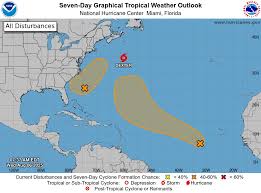
Introduction to the National Hurricane Center
The National Hurricane Center (NHC), a division of the National Oceanic and Atmospheric Administration (NOAA), is vital for predicting and monitoring hurricanes and tropical storms that impact the Americas. Its expertise and timely updates can save lives by providing critical information to the public and emergency response teams. As hurricane season approaches, the NHC’s role becomes increasingly relevant, especially for coastal communities.
Key Functions of the NHC
The NHC is responsible for issuing timely forecasts and alerts regarding hurricanes. This includes developing tracking models, providing real-time storm updates, and educating the public on preparedness measures. Recently, the NHC has enhanced its forecasting capabilities, implementing advanced technology such as satellite data and computer models to improve accuracy.
Recent Activities and Forecasts
As of October 2023, the NHC has been closely monitoring several storms forming in the Atlantic. Forecasters have observed an increase in tropical storm activity, leading to several warnings and watches issued across the eastern seaboard. For instance, an early October storm showed signs of strengthening, prompting proactive measures in states like Florida and North Carolina. The NHC’s detailed reports and cone predictions help residents prepare for potential impacts by providing information on projected storm paths and intensity.
Conclusion: The Significance of the NHC
The work of the National Hurricane Center is more significant now than ever, given the increasing frequency and intensity of hurricanes attributed to climate change. Its accurate forecasts not only inform local governments and emergency services but also empower the public, allowing individuals and families to make informed decisions about their safety. With ongoing advancements in technology and increased public awareness, the NHC is poised to play an even more critical role in the coming years, underscoring the importance of preparation as we navigate climate variability and its associated risks.



